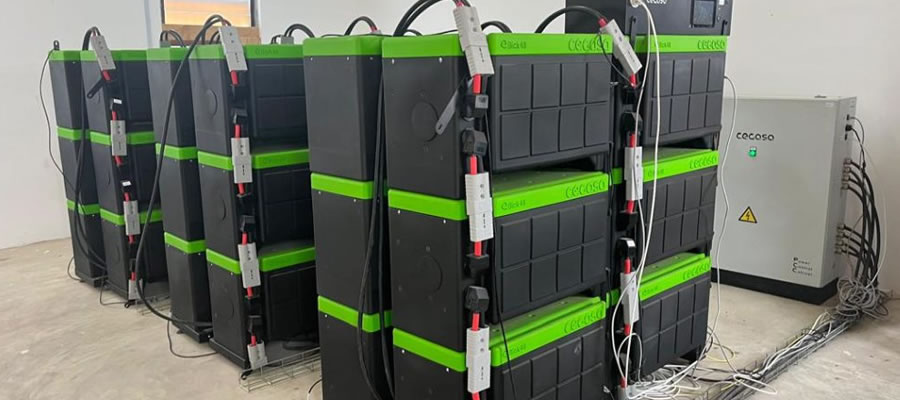

Social Services
Education
Globally, critical efforts are being made to ensure that, all children within the school–going age receive primary education by 2015. Similarly, in Ghana, the focus of the Ghana Education Service is to give Free Compulsory Universal Basic Education (FCUBE) to all children of school-going age by the year 2015. All these dimensions of development have charted a new course on education, stressing more on the need to provide basic educational infrastructure necessary to meet school – going population. Over the years, the District has performed tremendously under the educational sector. The provision of classroom blocks and basic teaching and learning materials characterized all the interventions made.
The District Education Directorate has been broken into 4 circuits. These circuits include: Ada-Foah, Big-Ada, Kasseh and Bedeku. The basis of this breakdown is to facilitate easy monitoring thereby promoting quality teaching and learning among schools. It is expected that; the breakdown will enhance efficiency and effectiveness in schools.
Availability of Teachers
There are 602 teachers in the District. Out of this, 573, representing 95 per cent constitute the total number of trained teachers (with 252 being females and 321 constituting males). With regards to the untrained, 29, representing 5 per cent are currently assisting the trained teachers. Table 1.21 below presents the total number of teachers per Circuits in the District.
According to table 1.22 above, there are 185 Educational Institutions in the District. Given this number of institutions, the district has 1010 staff at post. Out of this number, 67 per cent is currently available in the classroom as teachers. The others for some reason have departed for further studies. Table 1.23 below presents the enrolment levels of the district within the plan-period.
From the above table, it will be realized that, there increment in enrolment levels was insignificant over the years for the various levels. Within the period of 2007 however, there was a sharp decrease in enrolment levels. Besides, the factors which accounted for the drop have not been well established. It is expected therefore that, the required number of infrastructure to meet this enrolment will be made available in order to enhance teaching and learning in classrooms.
There over 20 schools without KVIP in the District. In the latter part of the planning period, some Water Closet projects have been undertaken in selected schools in the district. The projects were executed in response to the need to provide all basic schools with sanitation facilities.
The emphasis however has transformed significantly, instead of the initial technology of constructing KVIP, Water Closets have been preferred to be the most suitable, considering the attached comfortability and hygienic conditions it presents. In subsequent interventions therefore, more of these facilities will be constructed particularly for the Pre-and Primary Schools.
It is of grave concern to indicate that, the number of educational facilities in the District is woefully inadequate (Table 1.22 above and 1.26 below). If the District really wants to develop its human resource capacity base, then, it extremely important that, the provision of all the necessary prerequisites is juxtaposed to the provision of educational infrastructure in order to bridge the widening gaps.
From table 1.26 above, a total of over 6,000 educational needs have been estimated for the plan period – 2018- 2021. In the last 3 years, the district has been vigorously engaged in the provision of educational infrastructure and had wanted to shift the emphasis to the provision of staff accommodation, looking at the rate at which the population is growing however, and contributing immensely to the widening backlog in infrastructural needs, it is again necessary to provide all these essential facilities to meet the demand of the ever-increasing population alongside the accommodation needs. However, inasmuch as the district is striving to provide all these facilities, it is imperative to promote issues relating to population management and particularly the responsibilities of parents towards education.
Government interventions over the years have also contributed immensely to the infrastructural gaps. The introduction of new government policies without commensurate logistics to steer such interventions is not only distorting development plans but also shifting the emphasis from other issues which are also equally pertinent.
The launching of the School Feeding Programme, the introduction of the Capitation Grant and the Policy of Free Education has contributed by putting more children into schools. Albeit, all these policies are working strongly towards the attainment of the Sustainable Development Goals, it should be noted that, it has several hand maidens. The number as well as the equality of education being received are more crucial and cannot be overemphasized. It is therefore necessary and extremely justifiable for government to invest in infrastructural as a commensurate attempt to the interventions stipulated above.
Educational Related Social Interventions
Following the introduction of the Capitation Grants and the School Feeding Programme, the District has made several attempts to restructure the educational system in order to adequately input these important interventions. Within the plan-period, a total of GHs 322,207.23 was received as Capitation Grants and currently 33 schools in the District are benefiting from the School Feeding Programme. The coverage of the School Feeding Programme is woefully narrow and the district is lobbying in order to extent the coverage to other rural areas. The district is basically a rural economy with over 150 communities.
The Educational Sub-committee of the District Assembly in conjunction with Ghana Education Service has been embarking on frequent surveillance to ensure that the quality, quantity of food as well as basic environmental sanitation are being observed by those under the School Feeding Programme. The purpose of the visits is to ensure that, inasmuch as efforts are being made to feed the children, there must commensurate attempts to ensure what they taken in is hygienic and done in a hygienic environment.
Drop Out and Performance in English and Mathematics Rates
At the basic levels, performance in English and Mathematics are normally chosen to measure the extent to which students understand the subjects being taught. In 2014-2015, considerable strides were made to organise the examination. The performance rates for the periods were 57 per cent and 72 per cent for Mathematics English respectively.
Again in 2016, there was another District Common Examination which shows the following results; 61.63 per cent for Mathematics and 83.40 per cent for English. Considering the performance in 2015 and 2016, it can be said that, the District performed averagely in the examination.
The Examination is supposed to prepare the students towards the Basic Certificate Education Examination. Therefore, it is important to ensure that, students receive the necessary assistance prior to the examination. There are crucial efforts to fill the manpower gaps in most rural schools. The manpower gaps are dreadful in some selected rural schools and needs an urgent attention.
With respect to the Drop Out rates, 15.7 per cent has been record for the Junior High Level and 2.14 per cent for the Primary level. The Junior High-level dropout rate presents a serious issue for the district. It is important to sensitize communities on the need to train the available human resources. Parents and other people responsible must be educated at Gender Programmes on the importance of education. This will go a long way to reduce the rate of dropout in schools.
The development of human resources has been determined as one of the critical sine qua non to drive the development vehicle. With grave concern, district has recognized these and is making strenuous efforts towards it. However, at any level in time, it is very important to know that, it has several facets which need a complex analysis.
The building blocks of education: the Child, the Teacher, the Environment as well as Time, the Community, the Curriculum (what is taught), Pedagogy (how is taught), Administrative and Management Systems and Financial support constitute the crucial factors of education. At any level therefore, it is important to ensure that, all these factors are blended to provide a holistic education to the available school going population.
Specifically, this year, efforts will be made towards the provision of Pre-school infrastructure. With regards to table 1.26 above, and again, with due cognisance to government policy on education, the provision of Pre-school infrastructure is topical in all and the district will be making considerable strides in that regard.
Date Created : 11/15/2017 7:19:10 AM












 facebook
facebook
 twitter
twitter
 Youtube
Youtube
 +233 593 831 280
+233 593 831 280 0800 430 430
0800 430 430 GPS: GE-231-4383
GPS: GE-231-4383 info@ghanadistricts.com
info@ghanadistricts.com Box GP1044, Accra, Ghana
Box GP1044, Accra, Ghana